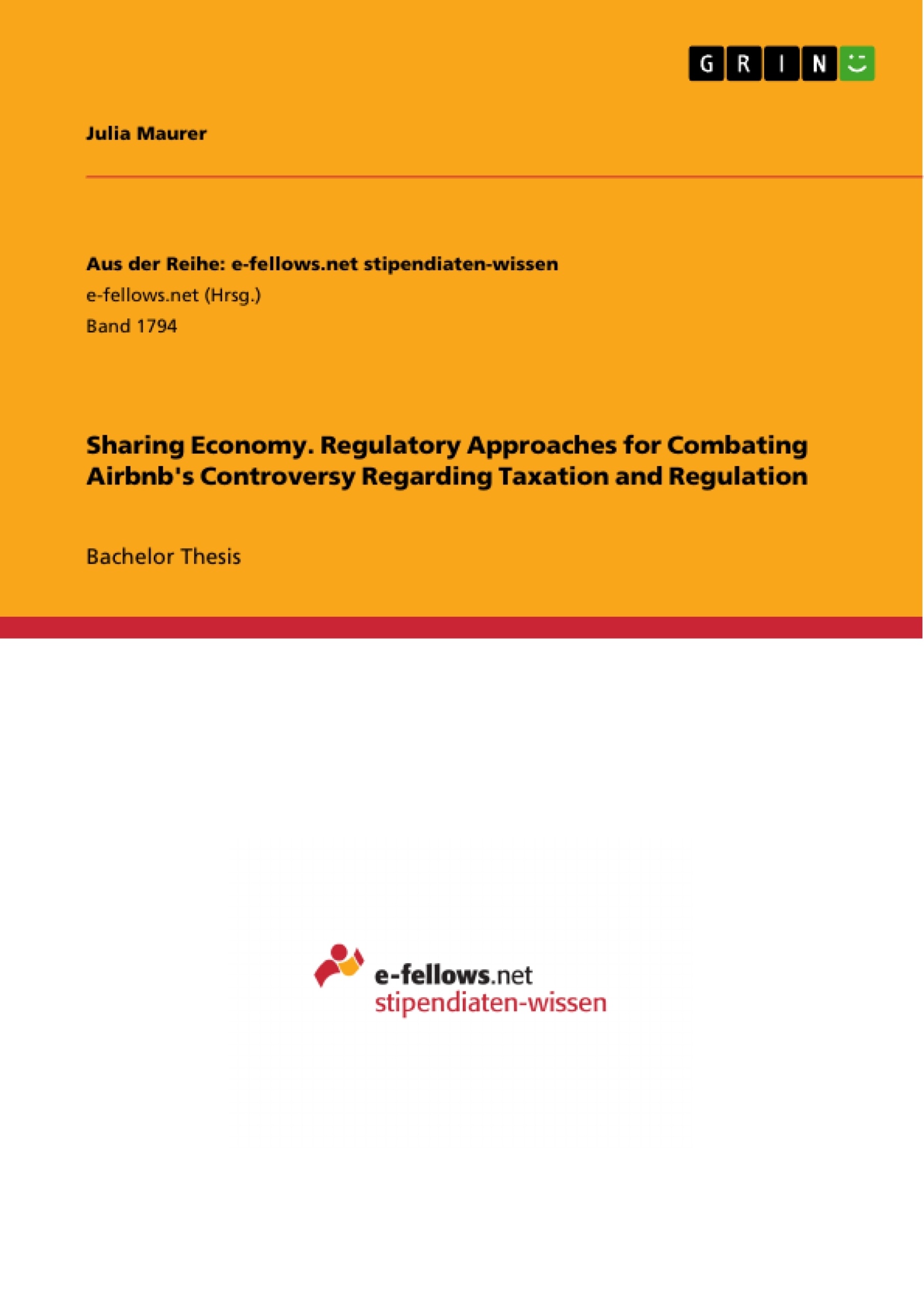Over the last few years, the sharing economy has grown substantially with new high-profile businesses emerging. Especially Airbnb became an integral part of the accommodation industry and disrupted traditional hotel and Bed and Breakfast businesses.
However, at present, Airbnb has to face many controversies due to consumer safety, regulatory and tax evasion issues. As regulators and legislators established laws and regulations with the traditional economy in mind, they are not suited for the sharing economy and application often remains uncertain, especially in the area of taxation. Consequently, the difficulty of establishing an effective regulatory framework for the sharing economy is receiving considerable attention currently.
Therefore, this thesis aims to identify some of the challenges that will be of concern to regulators when developing a regulatory framework and outlines some guiding principles for regulating Airbnb. Finally, this thesis finds that a self-regulatory approach could be the most effective solution to encounter the difficulties and controversy.
Inhaltsverzeichnis (Table of Contents)
- Introduction
- Definition
- The Emergence of the Sharing Economy
- Forms of Appearance
- Product Services Systems: Access over Ownership
- Redistribution Markets: Recycling 2.0
- Collaborative Lifestyles: Bundling of Intangible Resources
- People Participating
- Key Drivers for Participating
- Sustainability
- Enjoyment
- Reputation
- Economic Benefits
- Downsides of the Sharing Economy
- The Distributive Implications
- Poor Conditions for Workers in the Sharing Economy
- Future Prospects
- Airbnb - An Example of Collaborative Consumption
- Background
- Facts and Figures
- The Business Model of Airbnb
- How the Platform Works
- Business Model Canvas
- Restructuring the Traditional Value Chain and Operating Model
- Airbnb's Impacts
- Economic Impacts
- Social Impacts
- Consumer and Public Safety Impacts
- Airbnb's Controversy Regarding Taxation and Regulation
- Regulatory and Fiscal Issues
- Airbnb's Approach
- Regulatory Responses
- Discussion about Regulating the Short-term Rental Market
- Regulatory Challenges
- Principles for Regulating Airbnb
- Self-Regulatory Approaches
- Self-Regulation and Self-Regulatory Organizations
- Recommendation for Successful Self-Regulation
Zielsetzung und Themenschwerpunkte (Objectives and Key Themes)
This thesis aims to identify the challenges regulators face when developing a regulatory framework for the sharing economy, specifically focusing on Airbnb. It outlines guiding principles for regulating Airbnb and explores the potential effectiveness of a self-regulatory approach.
- The emergence and growth of the sharing economy
- The business model and impacts of Airbnb
- The challenges of regulating the sharing economy, particularly Airbnb
- The potential for self-regulation in the sharing economy
- The need for a balanced approach to regulating the sharing economy that considers both its benefits and challenges.
Zusammenfassung der Kapitel (Chapter Summaries)
- Introduction: This chapter defines the sharing economy, discusses its emergence, and explores its different forms of appearance. It examines the key drivers for participation in the sharing economy and analyzes the potential downsides and future prospects of this sector.
- Airbnb - An Example of Collaborative Consumption: This chapter provides a detailed analysis of Airbnb, including its background, facts and figures, business model, and impacts on the economy, society, and consumer safety.
- Airbnb's Controversy Regarding Taxation and Regulation: This chapter delves into the regulatory and fiscal issues surrounding Airbnb, examining its approach to these challenges and the responses of regulators.
- Discussion about Regulating the Short-term Rental Market: This chapter focuses on the challenges of regulating the short-term rental market, outlining principles for regulating Airbnb and exploring the potential of self-regulatory approaches.
Schlüsselwörter (Keywords)
The key terms and concepts explored in this thesis include the sharing economy, collaborative consumption, Airbnb, regulation, taxation, self-regulation, and the challenges and opportunities presented by this rapidly evolving sector.
- Citation du texte
- Julia Maurer (Auteur), 2016, Sharing Economy. Regulatory Approaches for Combating Airbnb's Controversy Regarding Taxation and Regulation, Munich, GRIN Verlag, https://www.grin.com/document/322300



